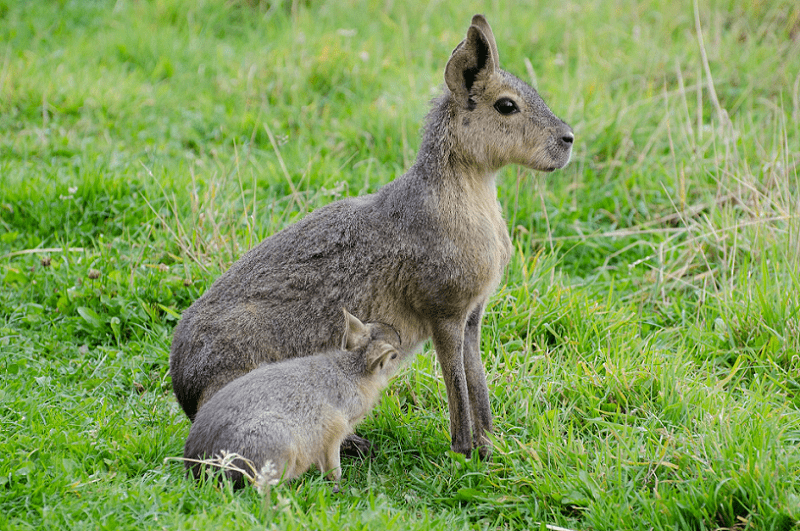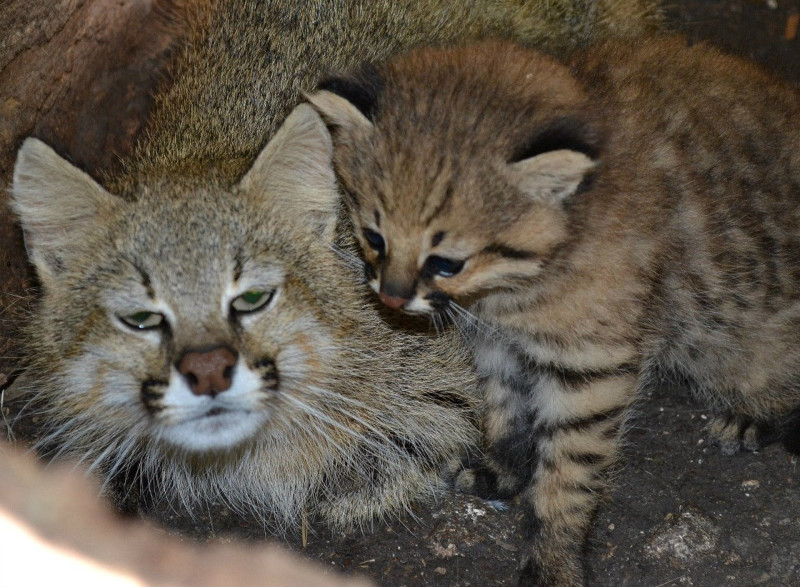
Pampas Cat Facts
- The Pampas Cat represents a rather small species of wildcat. The name derives from the fact that it principally inhabits areas of pampas.
- The small wild feline also currently holds a listing with the IUCN of Near Threatened.
- Habitat destruction remains considered to be the greatest threat to the survival of this animal. It remains rarely seen and has been little studied.
- As a result, very little is known of the hunting or breeding habits of this animal.
- Limited evidence also suggests that it principally preys upon birds and rodents. It also appears to be primarily nocturnal in nature.
Related Articles



Pampas Cat Physical Description
Though small in stature, the Pampas Cat possesses a relatively stocky build. Average sizes vary greatly, based upon geographical locations. Average body length ranges from 18-30 in (46-75 cm).
The tail of this beautiful species stays comparatively short, and averages 9.1-11.4 in (23-29 cm) in length, again depending upon geographical factors.
In a rather fascinating evolutionary adaptation, this feline species also displays three distinctly different variations in pelage.
However, all three present two dark lines on each cheek. Typically, individuals of each pelage variation remain restricted to a particular territory range.
One is found only in the extreme north, and yet another appears only on the far southern edge of its territory. Finally, those found in between comprise the greater majority of pelage type.
- Kingdom: Animalia
- Phylum: Chordata
- Class: Mammalia
- Order: Carnivora
- Family: Felidae
- Genus: Leopardus
- Species: L. colocola
Pampas Cat Distribution, Habitat, and Ecology
The name of the Pampas Cat also reflects its preference for inhabiting regions of pampas. However, individuals do also occur in a wide variety of habitat types.
These animals sometimes appear in Argentina, Bolivia, Chile, Ecuador, and Peru, in South America. Within that region, it will also inhabit a wide range of altitude.
The Pampas Cat most commonly occurs at altitudes ranging from 5,900-16,400 ft (1,800-5,000 m). In addition to the pampas, it sometimes inhabits several other types of habitat.
These include dry forests, grassland, and shrubland, as well as occasionally the Patagonian steppes. It often shares territory with other varieties of the wildcat.
Species Sharing Its Range



Check out our other articles on 5 Amazing Animals of Greece, Serval, Cradle Mountain, Eastern Sweetshrub, Evening Cicada, Hellbender Salamander, Weka, Wolf Eel, Gila Monster











Leave a Reply